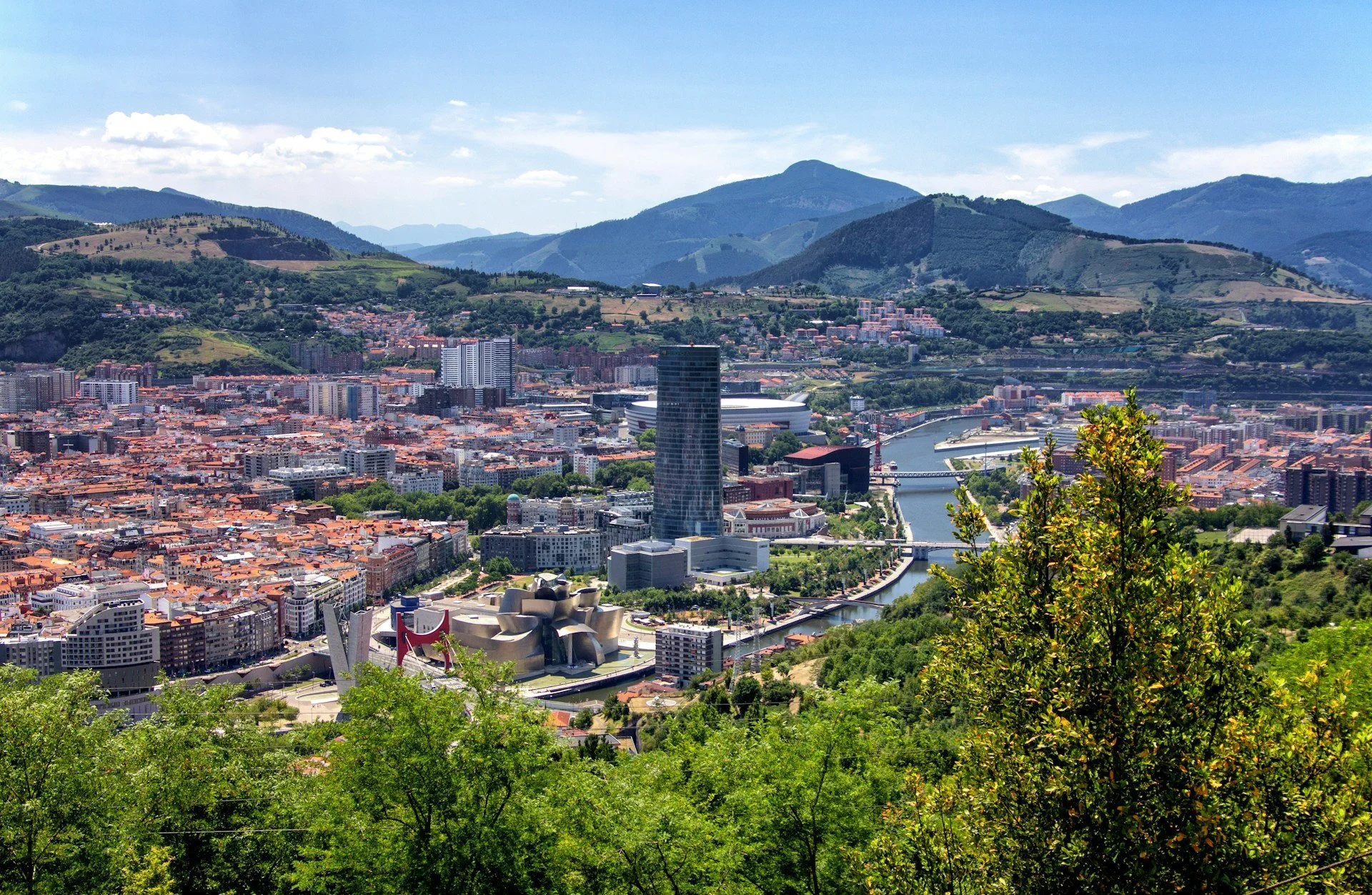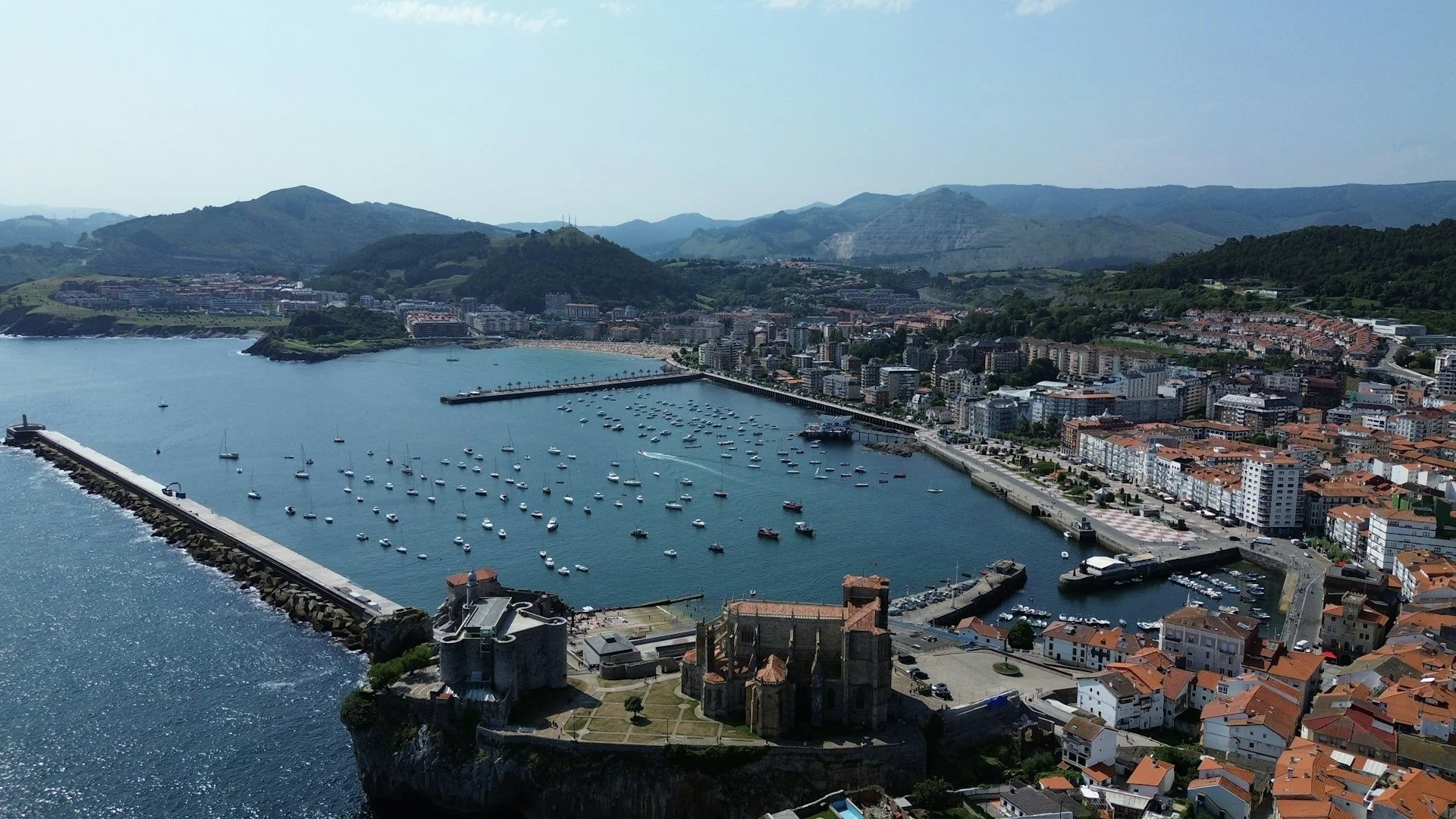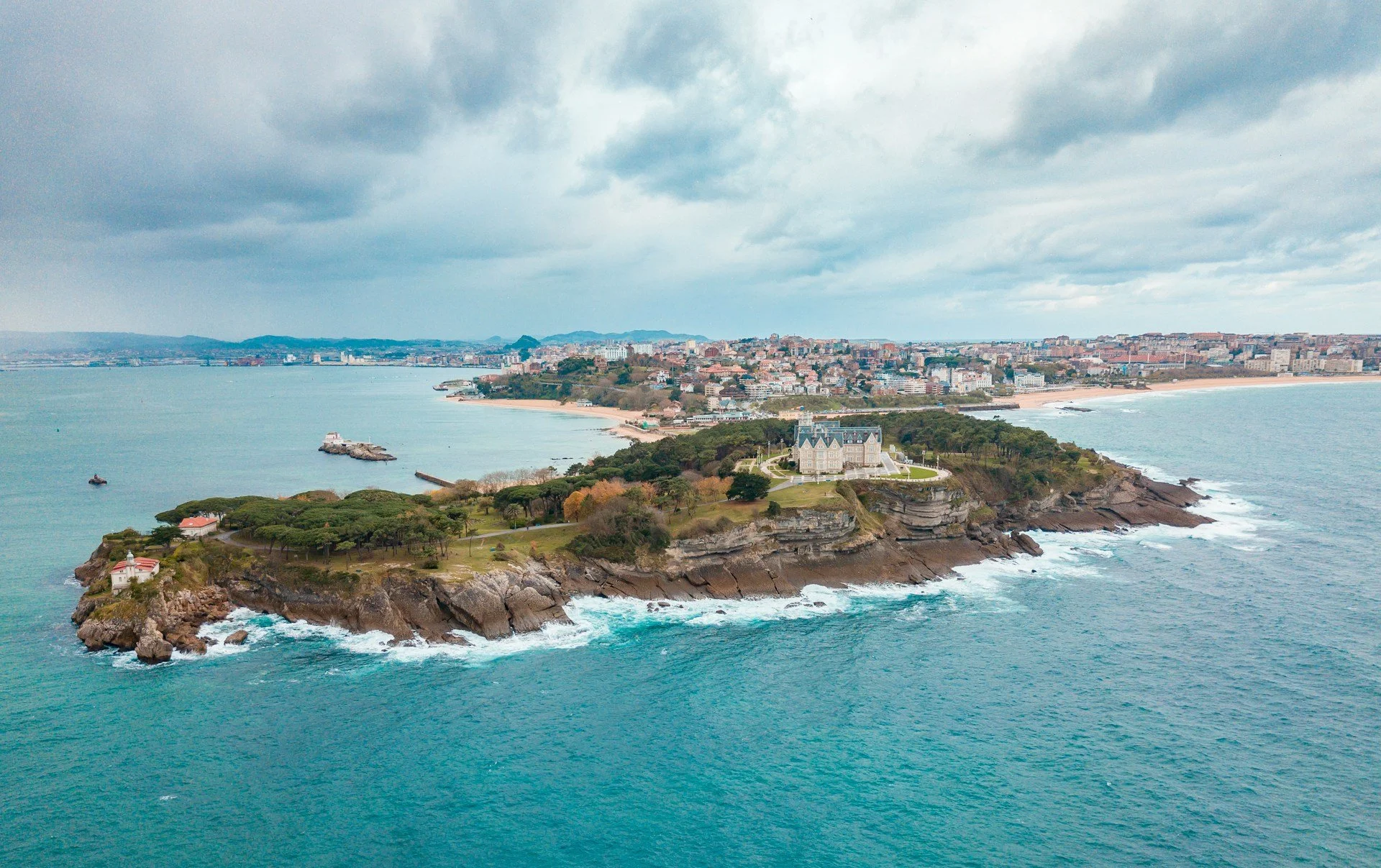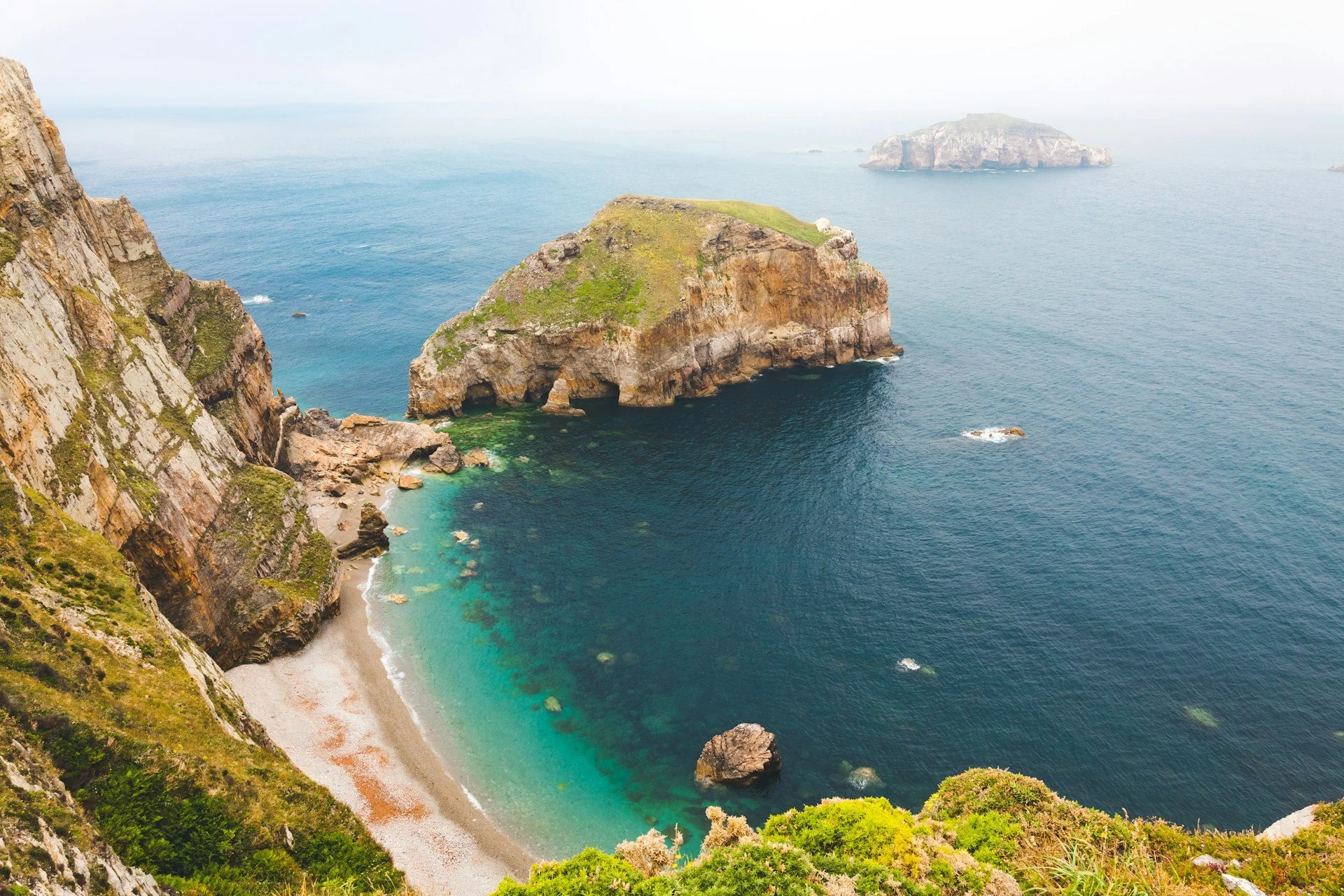3-day Camino Del Norte tour by private car
The “Camino Norte” or “Camino Spain” is one of the three popular routes of the Way of St. James. Starting in Irun, on the French border of the Basque Country, the Camino del Norte runs 817km to Santiago de Compostela. It's here that the apostle Saint James the Great is buried. For many, the Camino de Santiago pilgrimage is a spiritual path, but it's also an opportunity to explore rural Spain. You'll pass through one of the world's gastronomic capitals, experience the unique culture of the Basque Country, and admire amazing medieval architecture. The Camino Northern route is even on the UNESCO World Heritage List for its cultural significance. Said to be the oldest Santiago de Compostela pilgrimage route, the Camino del Norte has its roots in the 9th century. During the Middle Ages, it was a safer route than the French Camino thanks to the rise of the Moorish armies in the French territory. Although you won’t get your Pilgrim Passport traveling the Camino Norte by car, driving is far more convenient if you're more interested in history and culture. And you can still have the pilgrim experience by staying in one of the many of albergues (pilgrim hostels) situated along the route. To get to San Sebastian from Madrid, you can take one of the daily flights. Or travel by car to experience more of Spain's culture. You can even take our mini Game of Thrones Pilgrimage before you start the Camino. Book a one-way ride from Madrid to San Sebastian here.
Camino Route - Spanish Way Itinerary
Day 1: San Sebastian to Bilbao (Stops in: Sanctuary of Loyola, Durango, San Juan de Gaztelugatxe)
Day 2: Bilbao to Gijon (Stops in: Castro Urdiales, Santander)
Day 3: Gijón to Santiago de Compostela (Stops in: Cudillero, Mondonedo Cathedral)
Day 1: San Sebastian to Bilbao
Having been razed to the ground in the 19th century, San Sebastian doesn't have the wealth of medieval architecture found on other stops on the Camino del Norte. It does, however, have some beautiful 19th and early 20th-century buildings and an amazing beach to boot. But what makes San Sebastian a pilgrimage site in itself is the food. With more Michelin-star restaurants per square meter than anywhere in the world, it's a culinary treat and favourite for foodies like Anthony Bourdain. After you've had your fill of sun and food, start the Camino del Norte by heading from San Sebastian to Bilbao!
Sanctuary of Loyola
On the way, stop for an hour at this beautiful Baroque basilica. It stands atop the home of Saint Ignatius of Loyola, founder of the Society of Jesus (or Jesuits). Take an hour to explore the opulently decorated interior, filled with artwork, sculptures, and exhibits about the Saint's life and work.
Durango
Surrounded by the Basque Country’s most unique ecosystem, Durango is filled with monuments with plenty of historical and religious value. Take an hour to wander the streets and visit the Baroque Parish Church of Santa Ana and the gorgeous Gothic Church of María Uribarri. The Kurutziaga Cross is the town's favourite attraction: the 4.3 metre high monument is striking, covered in Biblical imagery.
San Juan de Gaztelugatxe
Luismi Sánchez captures San Juan de Gaztelugatxe which starred as Dragonstone in Game of Thrones
It’s not an official Camino del Norte stop, this 10th century hermitage should be visited by every traveler in Northern Spain! Perched on a rock islet only accessible by a winding pathway, you’ll be swept away by its raw, natural beauty. Plus, if you're a Game of Thrones fan, you're looking at the real-life “Dragonstone’!
Arrival in Bilbao
Bilbao’s blend of mountain views and cutting-edge architecture is captured perfectly in this shot by Yves Alarie
The Basque capital of Bilbao has gone from industrial hub to city of culture. Through its transformation Bilbao has said goodbye to its grey, drab facade and welcomed a modern, cosmopolitan way of life and all that goes with it. Go to the Guggenheim Museum for arguably one of the most impressive contemporary art collections in the world. The exterior, designed by Canadian American architect Frank Gehry, is a sculptural spectacle in itself, not to mention Louise Bourgeois’s monumental steel spider welcoming visitors at the entrance. The Basque museum is an education on Basque culture, while Europe’s biggest indoor market, La Ribera Market, is an education on the best Basque food. Known for its seafood dishes, we recommend tucking into some fresh local produce! And speaking of food, you're in for a treat in Bilbao, which has multiple Michelin star restaurants. The Old Quarter, or “Casco Viejo, is the thriving heart of the city, bustling with an atmospheric energy through the charming quaint streets. In fact, here you’ll find Bilbao’s original seven streets, Las Siete Calles, which date back to the 1400s!
Day 2: Bilbao to Gijon
Once you're done gorging on art and culture, continue your Camino de Santiago itinerary and head from Bilbao to Gijon.
Castro Urdiales
This charming seaside town, captured here by Youssef has been a favorite summer escape since Roman times
Discover the surprisingly rich history of this little port. You'll find a Roman milestone opposite the stunning 13th-century Church of Santa María. Spend an hour exploring the rest of the town, where you'll be treated to forts, palaces, and other buildings dating from the 13th to the 20th centuries.
Santander
Palacio de la Magdalena on its own peninsula, was once a royal summer residence perfectly captured here by @willianjusten
Lined with long, sandy beaches, this ancient fishing village delights beach-goers and seafood-lovers alike. Regardless of what camp you fall in, don't miss the 13th-century Santander Cathedral with its amazing Gothic architecture on your 90-minute visit.
Arrival in Gijon
This dreamy stretch of Cantabrian coastline photographed by Boris Hadjur is home to some of the most hidden and unspoiled beaches in Spain.
Dating back to the Romans, Gijon enjoyed a golden age when it was made a royal port by the Catholic Monarchs in the 16th century. The old town of Cimavilla remains a charming jumble of pastel-painted buildings surrounding the stunning marina. As you're exploring, you'll stumble across the ancient Roman ruins that still dot the city, like the remains of ancient walls, and the hippocaust for the baths. Standing in contrast to the old town is Spain's largest building: the University of Gijon, La Laboral. Covering around 270,000 square meters, the massive Neo-Herrerian complex is considered the most important architectural project in Asturias from the 20th century. Adding to its superlatives, the church at La Laboral is the largest elliptical floored church in the world. A few kilometres outside of town you’ll find the Atlantic Botanical Garden, a stunning green area housing over 2000 plants. There’s a garden dating back over 150 years, and a forest with ancient trees more than 400 years old!
Day 3: Gijón to Santiago de Compostela
It’s the last day on your pilgrimage Santiago de Compostela route! Santiago de Compostela day trips are not complete without some sightseeing along the way. We will take you to two great stops before you reach the final destination on your pilgrimage.
Cudillero
Cudillero’s houses were once painted by fishermen to match the color of their boats, a tradition beautifully preserved in this photo by Miguel Ángel Sanz
Wander what might just be Spain's prettiest village for an hour. Legend has it that Vikings founded Cudillero, though we can’t attest to that. What's undeniable is that the colorful buildings perched unevenly on the cliffside ooze charm. Along with the colorful houses and turquoise water, it's a historic stopping point on The Way of Saint James.
Mondonedo Cathedral
Once upon a time, this sleepy valley village was one of the capitals of the Kingdom of Galicia. Today, it's one of the most beautiful in Spain and a real gem on the Camino del Norte route to Santiago. The highlight of your 45-minute visit is sure to be the 13th-century Mondoñedo Cathedral. This UNESCO World Heritage Site on the Way of St. James is primarily a mix of Romanesque and Gothic styles with some Baroque flourishes on the facade.
Arrival in Santiago de Compostela
Founded in the early 400s during the collapse of the Roman Empire, the holy city of Santiago de Compostela was born after the remains of Saint James were found in the 800s. It's been a hub for Christian pilgrimage ever since. Make your first stop the city's main square, the Plaza do Obradoiro, one of the most beautiful urban spaces in the world. On one side, the famous Hostal de los Reyes Católicos has been housing pilgrims since it was founded in 1499 by the Catholic Monarchs. Then there's the neoclassical Rajoy Palace, now the city’s town hall, adorned with a statue of St. James riding his horse in battle. Oh, and the San Martin Pinario Monastery, the second-largest in Spain. This magnificent Baroque building boasts 3 cloisters, a fountain and 15 statues between the columns on the facade. But the crown jewel is the 11th-century Cathedral of Santiago de Compostela. As the resting place of one of Jesus' apostles, artistic attention has been heaped on the cathedral for centuries. While every nook and cranny is intricately carved, if we had to pick one feature to stare at for an hour, it would be the amazing 12th-century Portico da Gloria - one of the world’s finest pieces of Romanesque sculpture. Of course, the crypt is what’s been drawing pilgrims for over a millennium. It’s here that you can see the tomb of St. James and two of his disciples, as well as several Spanish kings. Even if you’re not interested in the religious importance, they're a historic and artistic treat. While you’re down there, check out the “botafumeiro”, a giant incense burner that is in action on religious holidays.
Ready to book your trip on the Camino del Norte?
San Sebastian to Bilbao by car
Bilbao to Gijon by car
What next?
Continue your Iberian cultural experience with a trip from Santiago to Compostela to Lisbon!







